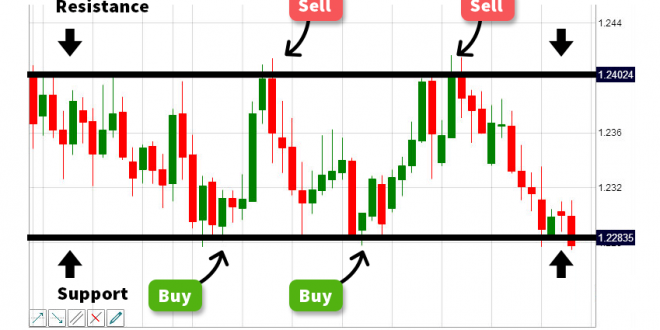Learning the language of forex is the greatest approach to get started on your forex journey. To help you started, here are a few terms:
A forex account is a type of account that is used to trade currencies. There are three types of FX accounts, depending on the lot size:
- Micro forex accounts are those that allow you to trade up to $1,000 in currency in a single lot.
- Mini forex accounts: These accounts allow you to trade up to $10,000 in currency in a single lot.
- Standard forex accounts: These accounts allow you to trade up to $100,000 in currency in a single lot.
The lowest price at which you are willing to acquire a currency is known as an ask (or offer). If you put an ask price of $1.3891 for GBP, for example, that value represents the lowest price you are ready to pay for a pound in USD. In most cases, the ask price is more than the bid price.
Link download aplikasi WhatsAround akan segera tersedia. Silakan tunggu sebentar.
- Bid: The price at which you are willing to sell a currency is referred to as a bid. In a given currency, a market maker is responsible for regularly placing bids in response to buyer inquiries. While bid prices are usually lower than ask prices, they can sometimes be higher than ask prices when demand is high.
- Bear market: A bear market is one in which currency prices are falling. Bear markets are the outcome of dismal economic fundamentals or catastrophic events such as a financial crisis or a natural disaster, and they indicate a market decline.
- Bull market: A bull market is one in which all currency prices rise. Bull markets are the consequence of positive news about the global economy and indicate a market rise.
- A contract for difference (CFD) is a financial derivative that allows traders to speculate on currency price movements without actually owning the underlying asset. Traders who believe the price of a currency pair will rise will purchase CFDs for that pair, while those who anticipate the price will fall will sell CFDs for that pair. Due to the use of leverage in forex trading, a CFD trade gone wrong can result in significant losses.
- Leverage is the use of borrowed capital to increase profits. High leverages are common in the forex market, and traders frequently employ them to strengthen their positions.
- For example, in a trade against the Japanese yen, a trader would put up $1,000 of their own money and borrow $9,000 from their broker (JPY). The trader stands to make significant profits if the trade goes in the right direction because they have used very little of their own money. A high-leverage situation, on the other hand, increases downside risks and can result in severe losses. If the trade swings the other way in the scenario above, the trader’s losses will increase.
- Lot size: Currencies are exchanged in lots of a certain size. Standard, mini, micro, and nano are the four most prevalent lot sizes. The money is divided into 100,000 units in standard lot sizes. The currency is divided into mini lot sizes of 10,000 units and micro lot sizes of 1,000 units. Traders can also buy nano lot sizes of currencies, which are 100 units of the currency. The lot size chosen has a considerable impact on the overall profit or loss of the trade. The higher the earnings (or losses), the larger the lot size, and vice versa.
- The money set aside in an account for a currency trade is known as margin. Even if the trade does not go as planned, margin money ensures the broker that the trader will stay solvent and able to satisfy financial obligations. The amount of margin is determined by the trader’s and customer’s balance over time. For trades in forex markets, margin is utilized in conjunction with leverage (described above).
- A pip is a “price interest in point” or “percentage in point.” It is the smallest price change in currency markets, equal to four decimal points. 0.0001 is equivalent to one pip. One cent is equal to 100 pips, and one dollar is equal to 10,000 pips. The pip value can differ based on the broker’s normal lot size. Each pip will have a value of $10 in a $100,000 standard lot. Because currency markets use a lot of leverage, little price changes, measured in pips, can have a big impact on the trade.
- The difference between the bid (sell) and ask (buy) prices for a currency is known as a spread. Forex traders don’t charge commissions; instead, they profit from spreads. Many factors determine the size of the spread. The amount of your trade, the currency’s demand, and its volatility are only a few of them.
- Sniping and hunting is the practice of buying and selling currencies near predefined positions in order to maximize earnings. Brokers engage in this behavior, and the only way to catch them is to network with other traders and look for trends in their behavior.
